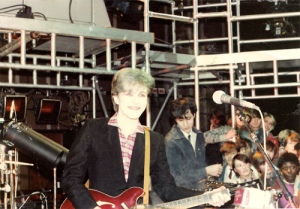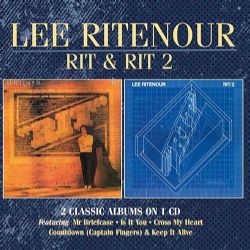Andy Beckett’s excellent new book ‘Promised You A Miracle UK80-82’ has got me thinking about the early ’80s a lot.
It was in many ways a bleak time in the UK (temporarily lightened by the Royal Wedding and Ian Botham’s cricket heroics against the Aussies), mainly defined by Thatcher’s deeply unpopular government, the Yorkshire Ripper murders, various terrorist attacks and fears of a nuclear war that were hardly appeased by the terrifying ‘Protect And Survive’ public information films.

Contemporary pop generally railed against this attitude, wresting some much-needed fun and glamour from the gloom.
Although ‘Private Investigations’ shares almost nothing with prevailing musical trends of the period (and Mark Knopfler saved his reaction to the Falklands War for Brothers In Arms‘ title track), it continues to hold my fascination.
These days it’s hard to read the song as anything other than a portrait of a love affair gone wrong, emphasised by the slightly dodgy video.
The song’s protagonist is fixated on looking for clues of his paramour’s infidelities, so he goes ‘checking out the reports’ and ‘digging up the dirt’, finding some ‘confidential information in the diary’.
We never found out exactly what he finds but it definitely ain’t good; in this song, to discover the truth of a relationship is a fate worse than death, leaving one ‘scarred for life’ with ‘no compensation’.

Love Over Gold Tour, Zagreb, 1983
I love the track’s sonic detail. The sense of drama and use of dynamics leaves other contemporary pop for dust.
The stereo spectrum is used as a kind of panaromic field across which various sonic events are ‘placed’ to fit the narrative, including Mike Mainieri’s intricate marimba and subtle bits of percussion.
The result is a kind of mini-movie set to music, best listened to with headphones. Ennio Morricone couldn’t have done it better. You could argue that ‘Private Investigations’ was the catalyst for all Knopfler’s film soundtrack work.
He also demonstrates a mastery of many guitar styles on the track, from the nylon-string acoustic main theme/mini-solos through to the power-chorded interjections towards the end, the latter frequently inspiring some of my uncle’s most spirited air guitar-playing back in the ’80s.
Then Knopfler’s volume-pedal swell perfectly imitates a cat’s nocturnal howl. The last section, with its picked-bass/kick-drum heartbeat and Alan Clark’s chiming piano chords, seems very influenced by the title track of Steely Dan’s ‘Royal Scam‘.
I love that glass (window?) breaking and the click of a suitcase opening, or is it the latch of a door being tampered with? The space in the track forces you to focus on these details. It all adds up to something akin to Knopfler’s version of Peter Gabriel’s ‘Intruder’.
Astonishingly, in a slightly edited form, ‘Private Investigations’ reached UK number 2 in September 1982 (sitting incongruously in the top 10 alongside ABC, Duran Duran, Dexys, Shalamar and The Kids From Fame!), a sure signifier as to just how much better the charts were back then.
The track’s accompanying album, Love Over Gold, is seen as somewhat of a disappointment in Dire Straits’ discography, and I can’t say that any of its other tracks have had much effect on me.
But now that the nights are drawing in and the blinds are being shut, it’s always fun to dim the lights and give ‘Private Investigations’ a spin. The game commences…










